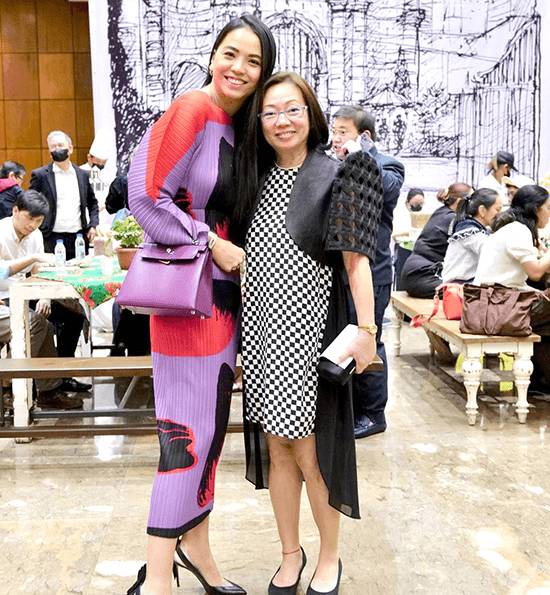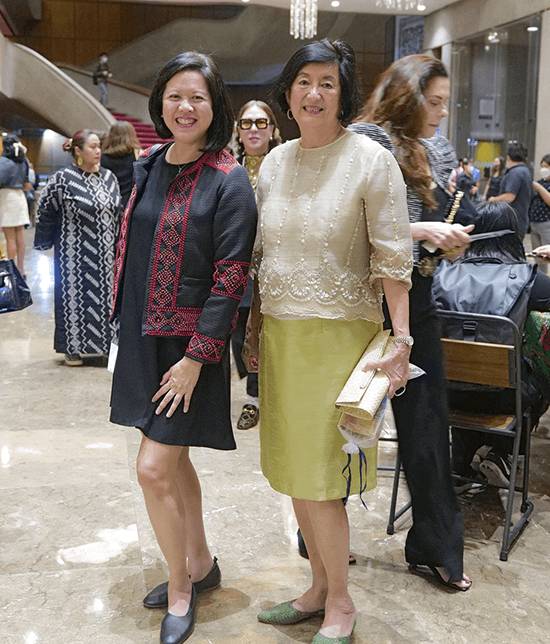Heritage and community at a Filipino Christmas ballet
While the virus was raging during the pandemic when live performances were cancelled, Alice Reyes hosted displaced ballet dancers in a safe bubble at her residence so that they could continue dancing, teaching online classes, and creating new works that would find an audience online through the Cultural Center of the Philippines’ Professional Artist Support Program.
During this time, the National Artist for Dance nurtured and mentored young choreographers, led by Ronelson Yadao, who would become the artistic director of the Alice Reyes Dance Company (ARDP).
Yadao, as well as his co-choreographers Erl Sorilla, Lester Reguindin, John Ababon, AL Abraham, Dan Dayo, Bonnie Guerrero, and the other dancers, would realize the importance of family—which they had naturally become with their “mother,” as they fondly called AR; as well as community—made up of the cultural institutions led by CCP and all arts-loving patrons that would support their vocation and passion.

This realization would be the seed for Puso ng Pasko, a ballet first done in a short version called Tuloy ang Pasko as a nostalgic yet optimistic piece, “a story of old friends, separated by distance and the pandemic, reliving the joys of the holidays of their youth,” says Yadao. It was conceptualized with the belief that whatever happens, Filipinos will celebrate Christmas the best way they know how and in fact begin decorating and starting festivities as early as they can—earning the Philippines the title of having the longest Yuletide celebration in the world.
Employing the music of Ryan Cayabyab with his timeless Filipino Christmas songs, the Filipino sense of community, spirit of resilience, optimism, and merrymaking is expressed through dance with a uniquely Filipino idiom that Reyes has pioneered and encouraged throughout her career spanning 70 years. “Her insight and mastery of storytelling through dance continue to guide us in our creative process as we developed our story.”

Puso ng Pasko, which had its world premiere gala last Friday, Dec. 2 at the CCP, has Lolo Val in California passing down his memories of Filipino Christmas traditions to his granddaughter, Angelita, who grew up in the United States. “There are also scenes inspired by the different festivals in the Philippines adding to the concept that Christmas is the biggest fiesta in the country and how Filipinos celebrate in creative ways,” adds the artistic director.
Lolo Val and Angelita represent first-generation Filipino migrants and their foreign-born descendants. “These communities maintain cultural, linguistic, historical and religious links to their homeland, which distinguish them from other groups of similar origins,” shares Tats Manahan, surface decorator/restorer for wall paintings and past chairman of the Heritage Conservation Society, who was also one of the guest dancers in the Rigodon segment.

For the Rigodon—a traditional, festive dance for prominent members of the community—the women don the traje de mestiza and the men wear the barong. “The ballet narrative honors Philippine traditions through the inseparable association of tangible and intangible structures, gastronomy, and practices that make up the country’s rich and colorful heritage, handed down from one generation to the next, all to preserve and cherish,” says restoration architect Mico Manalo.
In line with the narrative of Puso ng Pasko, Manahan and Manalo conceived a lobby setup replicating Simbang Gabi or early morning Christmas masses with a mural of a church façade sketch by STAR columnist Paulo Alcazaren, a CCP Gawad Awardee for the Arts in Architecture and leading figure in the field of heritage preservation. Vendors proffer traditional Christmas fare such as bibingka, puto bumbong, and ensaymada with tsokolate.
This tableau greeted guests to the gala, who came in their Filipiniana fineries, some traditional, but many with contemporary twists. With CCP as the home of Ternocon, organized in tandem with Bench to promote our national dress, it was a preview of sorts for the third edition of the competition coming in January. Ternocon has definitely made the terno and other variations of Philippine dress more de rigueur for events and more so for this ballet, which celebrates Philippine arts and culture.
Black was a favorite color for the ternos that evening. Liza dela Fuente, who played the love interest of Lolo Val in the Zoom video, wore a full-length one with an ethnic woven bag in vivid colors. Ann Ong’s textured terno by Philip Rodriguez was the perfect canvas for her statement jewelry. Myrza Sison went mini with a bolero by Edgar Madamba. Kourtney Camcam got her terno top online, while her stretch pants were 25-year-old DKNYs that proved the most comfortable after her pregnancy. Her preferred jewelry is Pagari, “an advocacy-driven brand providing skills and livelihood to the widows left behind in Marawi.”
Fine Philippine craftsmanship was very visible with artisanal pieces like Lulu Tan Gan’s embroidered piña top with lace inserts worn by Mia Borromeo, which she paired with a brass inlaid wood minaudiere. Evelyn Uy wore Ditta Sandico’s terno in abaca fiber. Anna Periquet commissioned Lumban embroidery for her ensemble. Designers Pando Manipon and Tony Cajucom wore barongs with couture details and beading.
The barong saw modern iterations as womenswear: as a kimona with intricate rhinestone beading by Paolo Miguel, worn by Ana Lorenzana De Ocampo; and a long, embroidered vest of Alegre by Techie Hagedorn, worn by Natalia Peña.
There was ease in combining precious pieces with off-the-rack favorites, the way Daphne Oseña Paez slipped her delicate piña wrap by the artist Olivia D’Aboville over an H&M LBD. Ella Puyat donned an embroidered panuelo from Kultura over a Zara lace blouse and skirt.
Aliki Pappas, who worked in fashion branding in her native Athens, was so enamored of the terno that when a friend gave her an Ilaya Couture bolero version in tweed, she was so excited to wear it for the gala. She enjoyed the ballet, which she said was “smooth and delicate and a chance to learn Philippine Christmas traditions.” Seeing how her Filipino friends were proud of their culture showcased in the show, she felt one with them as a community that appreciates beautiful music and dance, as well as finely crafted Philippine national dress.
* * *
Puso ng Pasko will be restaged on Dec. 17 at the Metropolitan Theater at 2 p.m. and 7 p.m. with the evening show featuring live music with Ryan Cayabyab conducting the Orchestra of the Filipino Youth and the Ryan Cayabyab singers. Follow Alice Reyes Dance Philippines on Facebook and on Instagram.








